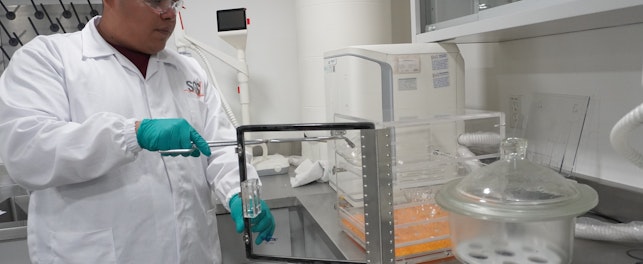Consumers are increasingly considering sustainability when buying new products, not just for the planet but also because of cash-strapped wallets.1 We look at how suppliers of consumer electronics are adapting to these market changes.

Sustainability is now on the agenda for individuals, governments and industries. It is has joined traditional market drivers – safety, performance and price – in being a consideration when consumers want to buy a new product.
The Consumer Electronics Association acknowledged the importance of taking a more proactive approach to positive environmental, social and corporate governance (ESG) in their document, ‘Environmental Sustainability and Innovation in the Consumer Electronics Industry’, where they stated, “we exist not only as part of a global economy, but also as part of a global ecosystem. Our future success will be determined as much by our stewardship to the environment as to our customers, employees and business partners.”2
Environmental impact
We have grown to rely on a wide variety of consumer electronic devices, but this dependence comes at a price. We are estimated to currently being using 1.75 planets worth of resources, a figure that is to rise to two planets by 2030.3 This is more than the planet can replenish and added to this, deforestation and some mining operations are intensifying the problem. Alongside resource use, there are problems associated with increased energy use, higher greenhouse gas (GHG) emissions, and a lack of effective recycling.
The UN estimates humans generate 50 million tonnes of electrical and electronic (EE) waste every year and the problem is expected to bigger – 120 million tonnes by 2050. However, currently only 20% of this is formally recycled.4 This is a wasted opportunity. Annual e-waste is valued at USD 62.5 billion, more than the GDP of some countries. It is estimated that one tonne of cell phones contains as much gold as 70 tonnes of gold ore, and that up to 7% of the planet’s gold is lost in e-waste.5
There are also environmental concerns over energy use. In the US, residential energy use has steadily been increasing in previous decades and now stands at 22% of total energy use.6 This is despite a decrease in average household energy use brought about by greater insulation and more efficient appliances.7 Two factors are impacting these figures. Firstly, the number of households in the US has grown enormously in the last four decades – from 80 million in 1980 to 128 million in 2020.8 Secondly, we now have multiple devices in every room, and even in our pockets. These require electricity, the generation of which is increasing GHG emissions.
The consumer electronics industry is responding in a variety of ways.
Recycling
Recycling reduces the need to extract new resources. Many of the materials used in consumer electronics and their packaging can be sourced from recycled resources. For example, some computer manufacturers are using recycled materials, including plastic resins, to build their products.9
Some markets are also introducing initiatives that foster greener solutions to e-waste. For example, the European Union (EU) has passed directives covering the Waste of Electrical and Electronic Equipment (WEEE), Energy-related Products (ErP) and Ecodesign.
Concerns over the use of recycled materials in products relate contamination. In some instances, this might impact safety and performance therefore all recycled materials must be properly verified before use.
Reparability
Recycling and greater use of recycled materials are just two aspects of the ultimate sustainability goal, the completely circular economy where resources are made into products, used, reused and recycled multiple times. An important aspect of this is a reduction in obsolescence and the ability to repair rather than replace a product.
In 2020, France led the way with the passing of its Anti-Waste for a Circular Economy act (AGEC). Among the provisions in this act are requirements to provide information relating to the availability of spare parts, the need to use parts from a circular economy, and give time frames for repair. Built-in obsolescence techniques, including software, are banned and vendors are required to display a reparability score for each product.
These requirements will lengthen the time a product remains usable, thereby reducing overall waste. They also align with consumer demand, as a recent survey found 77% of Europeans would prefer to repair rather than replace an EE product.10 It should therefore be assumed this is a trend that will spread around the world.
Energy efficiency
One area where EE manufacturers are making great advances is in energy consumption. Even so, with the increased prevalence of consumer electronics in our daily lives, there needs to be even greater focus on reducing GHG emissions by reducing energy usage.
Several markets already employ energy efficiency rating systems to help consumers choose better products – for example, the US ENERGY STAR program. The effectiveness of these programs in persuading companies to create more efficient products is demonstrated by the fact the EU had to introduce a new energy labeling system in January 2019 when the previous version became obsolete.
Consumer electronic product manufacturers have made great advances in reducing energy use and GHG emissions. Examples from leading electronics companies include 70% greater efficiency in products compared with ten years ago, use of only renewable energy at facilities and a 466,000-ton reduction in GHG.11
Packaging
Being greener also means using less packaging. It is estimated the average European produces 174 kg of packaging waste a year.12 The fragility of some electronic products and their high value means packaging levels for some consumer electronics are excessive.
Many businesses are now addressing this problem by using more sustainable materials, replacing virgin materials with recycled, bio-based or compostable materials.13
SGS solutions
We offer a comprehensive range of testing, inspection and certification solutions to help manufacturers of consumer electronics improve sustainability in their products. From sustainable packaging to circular economies, our experts help businesses to successfully access environmentally responsible markets. Sustainable material solutions include recycled material audits and hazardous substances management, bio-based material testing and biodegradable/compostable material testing.
Our connectivity solutions cover all aspects of consumer electronic testing and certification, including performance and reliability testing, and assessment against the requirements of RoHS, WEEE and REACH.
Learn more about SGS testing solutions for consumer electronics.
For more information, please contact:
Litto Tam
Assistant Technical Services Manager
Electrical and Electronics Technology, Connectivity & Products
t: +852 2774 7187
References
1 How we are changing the way we rate sustainability of consumer electronics2 Environmental Sustainability and Innovation in the Consumer Electronics Industry
3 Overuse of Resources on Earth
4 UN report: Time to seize opportunity, tackle challenge of e-waste & A New Circular Vision for Electronics – Time for a Global Reboot -
5 13 Groundbreaking Startups Using Recycled Material to Create Cool Products and Help Clean Up the Planet
6 Use of energy explained
7 Use of energy explained – Energy use in homes
8 Number of households in the U.S. from 1960 to 2020
9 Why electronics manufacturer are using more recycled plastics & 10 Most Sustainable Consumer Tech Companies
10 Repair is Better Than Replace: France’s New Reparability Index for Electronic Products
1110 Most Sustainable Consumer Tech Companies
12 Waste generation by packaging material
13 Turning the Tide: Creating Sustainable Packaging Solutions



